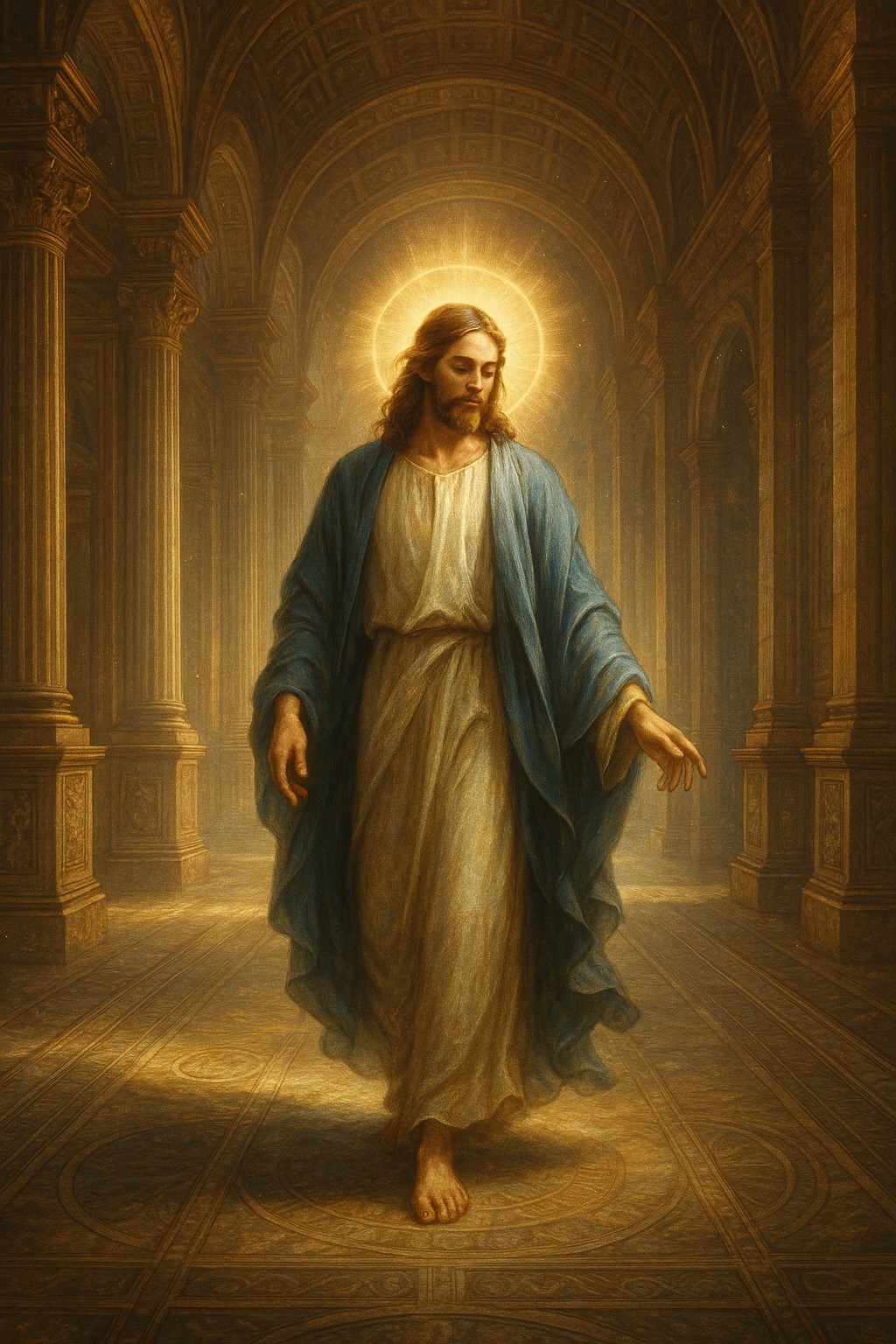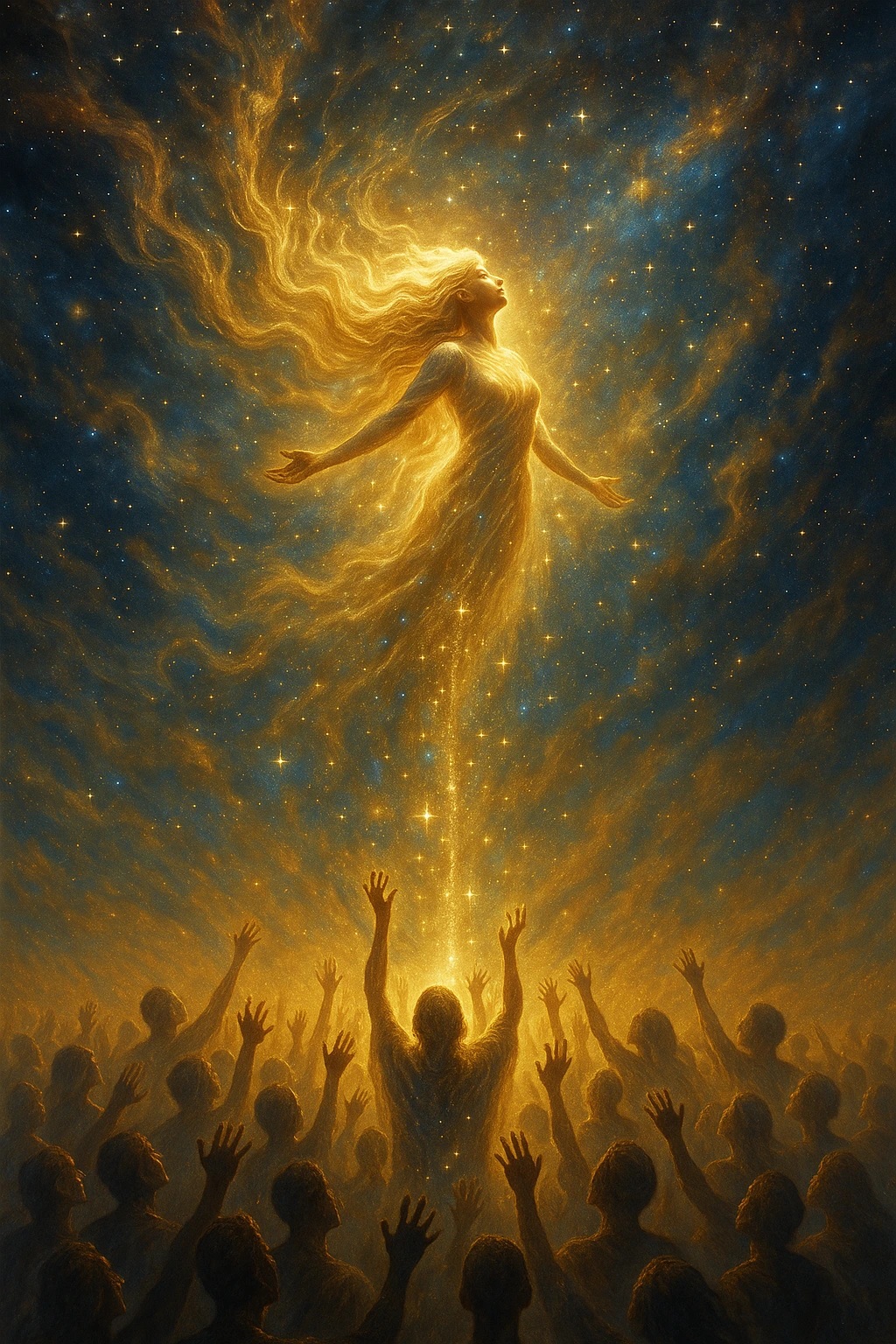⚠️ Previously in Part I
Previously: You heard the voice behind the veil—not a god of wrath, but a Revealer of the spark. Christ came not to be worshipped, but to reflect what you truly are. His mirror shattered the illusion. His words lit the memory. Now the soul must face the test no priest can guide—death, and the return to the Pleroma.
🔓 Chapter 1: Jesus the Gnostic
Forget the Sunday school story.
The Gnostic Christ didn’t come to appease a wrathful god. He came to expose the false one.
He wasn’t a sacrifice. He was a Revealer—a revealer of hidden truth, sent to awaken those trapped in illusion.
He did not demand worship. He invited remembrance.
“Jesus said: He who drinks from my mouth will become like me, and I will become like him, and the hidden things will be revealed to him.”
Gospel of Thomas (Saying 108 — NHC II,2 51:10–15). Source
This was no metaphor. He wasn’t calling followers. He was calling peers—beings of light lost in flesh, who had forgotten who they were.
The Gnostic Jesus walked through the illusion like one who had seen behind the curtain. He laughed at the Archons. He broke Sabbath laws. He healed without permission. He whispered secrets to the few who could hear.
He didn’t die for your sins. He came to remind you that you were never fallen, only asleep.
⚡ TL;DR
- The Gnostic Jesus was not a sacrificial lamb, he was a revealer of hidden truth.
- He came from the Pleroma to awaken the divine spark within humanity.
- He challenged the Demiurge, ignored religious laws, and spoke in riddles to avoid the Archons.
- His teachings were about remembering who you truly are, not repenting for what you are not.
- Gnosis, not faith, was the path he offered.

🤫 Chapter 2: The Secret Teachings & The Mirror
The Gnostic gospels tell a different story.
They say Jesus spoke in parables to the crowd, but whispered truth to those who could hear.
There was a hidden teaching. A transmission for the few—not the saved, but the ready.
To Thomas. To Mary Magdalene. To James and John. He passed on keys. Codes. A map of the soul’s origin and return.
“If your leaders say to you, ‘Look, the Kingdom is in the sky,’ then the birds will get there before you. If they say it is in the sea, then the fish will get there before you. Rather, the Kingdom is inside of you, and it is outside of you.”
Gospel of Thomas (Saying 3 — NHC II,2 32:10–33:5). Source
This wasn’t dogma. It was initiation.
He didn’t come to found a religion. He came to hand you a mirror.
The Christ of the inner gospel says: “You are from the light. You’ve forgotten. I came to help you remember.”
In the Gospel of Philip, he speaks of a sacred chamber—a mystical union, not a wedding. In the Gospel of Mary, he affirms her insight above the apostles. In the Second Treatise of the Great Seth, he laughs as the Archons crucify only his shadow.
The real Christ? Already gone. Already risen. Already returning to the Pleroma.
“They thought they had killed me. But I was not theirs to kill.”
The Second Treatise of the Great Seth (NHC VII,2 55:15–56:5). Source
This is the Christ they buried—the one who came to show you what you are.
Not a worshipper. A mirror. A spark. A sovereign soul who forgot.
⚡ TL;DR
- Jesus gave public teachings, and secret ones to those ready to receive gnosis.
- He passed mystical knowledge to Mary Magdalene, Thomas, and others outside Church canon.
- The real Christ was never crucified, only a shadow. He laughed at the Archons.
- His goal was not salvation by blood, but remembrance by light.
- You are not separate from Christ. You are what he came to reflect.

🏛️ Chapter 3: Gnosis vs Religion
The Gnostic Christ didn’t come to build a Church.
He came to burn the veil.
He said, “The kingdom is within you.” The priests said, “Pay your tithe and obey.”
He said, “You are children of the living Father.” The bishops said, “You are fallen and unworthy.”
He revealed a God beyond jealousy, violence, and judgement—they rebranded the Demiurge and called him holy.
And so the war began—not between good and evil, but between gnosis and control.
To the Gnostics, religion became the new Archon—a system built not to save, but to suppress.
The Christ they preached? Dead. Obedient. Chained to a cross.
“Woe to the Pharisees, for they are like a dog lying in the manger of the cattle; for he neither eats nor does he let the cattle eat.”
Gospel of Thomas (Saying 102 — NHC II,2 51:1–5). Source
The early Church canonised four gospels and buried dozens.
They labelled Thomas, Mary, Philip—heresy. They hunted the Gnostics, burned their texts, and renamed power as piety.
But gnosis does not need a pulpit. It needs silence. It needs suffering. It needs the soul ready to remember.
This is why the system fears it.
Because once you know—truly know—you no longer obey.
⚡ TL;DR
- Gnosis is inner knowing, not belief, obedience, or blind faith.
- The Gnostic Christ offered sovereignty, not submission.
- The institutional Church suppressed these teachings to maintain control.
- True spiritual knowledge threatens systems that rely on fear, guilt, and hierarchy.
- The real gospel wasn’t written in stone—it was whispered soul to soul.

🔥 Chapter 4: Awakening the Spark
You’ve read the texts. You’ve heard the whispers. But now comes the hardest part—remembering what’s already inside you.
The divine spark isn’t a metaphor. It’s a hidden code in your soul—a smuggled signal from the Pleroma.
It’s the part of you that questions. That aches. That refuses to fit inside the cage of this world.
But awakening the spark isn’t safe.
It means letting the false self burn. It means seeing the Archons in your thoughts, your habits, your shame—and choosing to unmake them.
It’s trauma work. It’s shadow work. It’s rebellion that begins in silence—and explodes in knowing.
“Jesus said: He who seeks, let him not cease seeking until he finds; and when he finds he will be troubled, and when he is troubled he will be amazed, and he will reign over the All.”
Gospel of Thomas (Saying 2 — NHC II,2 32:2–10). Source
The Gnostic path isn’t for the pure. It’s for the raw—the broken open. The honest.
The spark wakes through pain, through presence, through prophecy. It doesn’t need a saviour—it is the saviour.
And when it ignites—nothing in this world can hold you.
⚡ TL;DR
- The divine spark is a real fragment of the Pleroma planted inside you.
- It awakens not through belief, but through remembrance, suffering, and inner fire.
- The Archons coded the illusion—not with machines, but with forces of fear, shame, and control. A cosmic pattern to keep the spark from waking.
- Awakening the spark means breaking old identities and reclaiming your true nature.
- You are not here to be saved—you are here to remember that you were never lost.

🕊️ Chapter 5: Sophia’s Redemption Through Us
At the center of the Gnostic myth is a broken mother.
Sophia, divine Wisdom, fell from the Pleroma—not in sin, but in longing. And in falling, she scattered her light through all of creation.
You are one of those fragments.
Your divine spark isn’t just about you—it’s a shard of her. Her memory. Her sorrow. Her promise.
Every time you awaken, another piece of her returns.
Every act of gnosis reassembles her body. Every truth spoken cracks the lie that broke her.
“Take courage. It is I; be not afraid.”
Pistis Sophia, Book I, Chapter 5, Source
In Kabbalah, she is the Shekhinah. In alchemy, she is the anima. In myth, she is Eve, Magdalene, the Serpent, the Bride.
But in you—she is becoming whole again.
This is why the Demiurge fears awakening—because your liberation is hers.
And when Sophia rises—the veil shatters.
You are not just the student of this gospel—you are the completion of it.
⚡ TL;DR
- Sophia, the fallen Aeon, scattered her divine light into creation—including into you.
- Your spark is a fragment of her, and your awakening helps restore her wholeness.
- Gnosis is not just personal healing, but cosmic repair—Sophia’s redemption through you.
- The system fears this—because the return of her light undoes the illusion.
- You are not a follower of the myth—you are the one completing it.

🎨 Creative Prompt
Compose a short meditation or image titled “The Spark Within.” Describe how the divine light moves through your life without words of faith or fear — only remembrance.
🗣️ What Does Liberation Mean to a Soul That Remembers?
You’ve seen the false light and met the Revealer within. Now the question turns inward.
When Christ awakens inside you — what must die for the spark to live?
- What belief still keeps you in bondage?
- Where does love become knowledge in your life?
- Can you recognise the Christ within others without worship?
Share your insight using #TheGnosticKey and tag @thegnostickey — your remembrance may light another’s path.
🧠 Quiz
Can you pierce the illusion and recognise the spark within?
📖 Glossary
Decode the hidden language of Christ as the inner Revealer — the mirror of remembrance.
- Christ the Revealer
- The emanation of the true God who awakens gnosis in souls, not a sacrifice but a mirror of remembrance.
- Logos
- The divine Word or principle of order through which the Light speaks into form.
- Sophia
- Wisdom personified; her repentance and ascent parallel the soul’s own return.
- Gnosis
- The knowledge of the heart — direct union with the Light beyond belief and ritual.
- Pleroma
- The Fullness — the realm of divine completion from which all emanations flow.
- Mirror of Christ
- To see Christ as a reflection of the true Self, not a figure apart but a memory of origin.